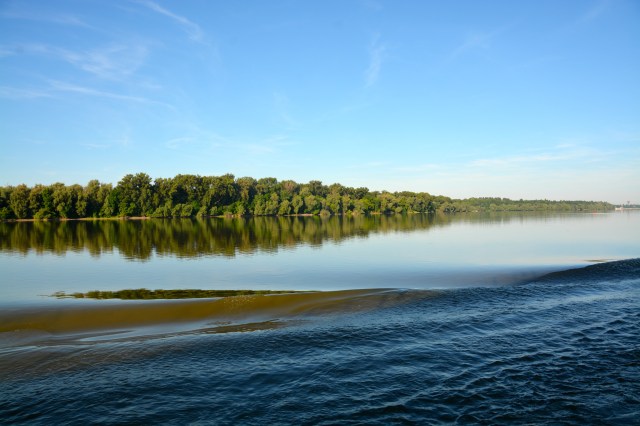
Photo ©Jean Janssen Along the Danube.
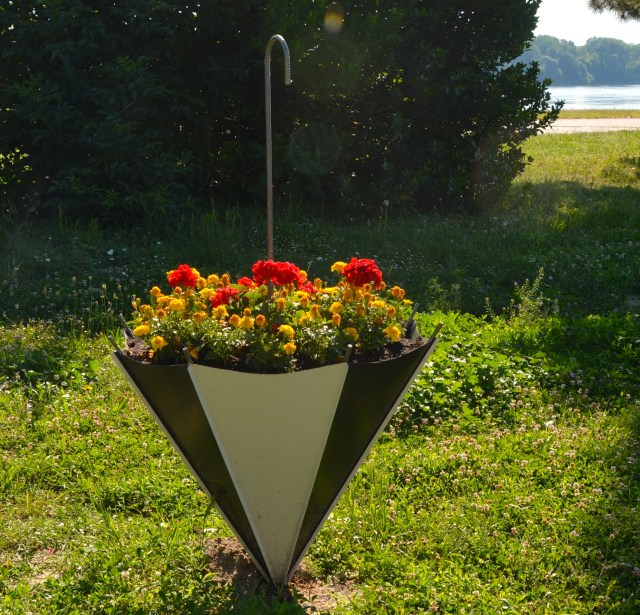
Photo ©Jean Janssen. Dockside in Vukovar, Croatia.
Today we reach another country in our westerly river trek on the Danube, Croatia. We are docked at Vukovar (wolf) on the border with Serbia and the site of great destruction during the Yugoslav wars. The 87-day siege of the town in 1991 was the most horrific in Europe since 1945; Vukovar was the first European town to be destroyed since the end of WWII. The invading army met with much resistance from the Croatian civilian population. We passed out of city on the major roadway though Vukovar called “the tank graveyard street” because it was once littered with 110 tanks destroyed by ingenious methods by lightly-armed Croatians.

The water tower in Vukovar, Croatia, shelled more than 600 times in the war for independence. The facade will remain while the scaffolding shows where a museum is under construction.
Ultimately, hundreds of Croatian soldiers and civilians were massacred and the area was ethically cleansed of over 20,000 non-Sebians. The city water tower, built in the late 60s, once housed a restaurant on top and was a popular spot for viewing the city before the outbreak of the conflict. During the siege, it was a frequent target of artillery and took over 600 shots. The tower still stands and has been kept as a memorial to the fallen citizens. The tower is currently under restoration; the exterior will remain the same, but the interior will house a museum. Vukovar remained in Serbian control until 1998. On the anniversary of the occupation, November 18, citizens light candles and float them on the Danube.

Photo ©Jean Janssen. Close up of the water tower in Vukovar, Serbia.
The Vukovar Hosptial Massacre was perhaps one of most vicious acts of the war. Near the end of the war, the Croatian forces negotiated an evacuation of the the local hospital. The Serbian forces ultimately refused to give the Red Cross access, removed the patients to a nearly farm, beat them for several hours, and then shot them all. The hospital patients ranged in age from 6 months old to 74 years old. They were buried in a mass grave that was discovered in 1992.

Photo @Jean Janssen. Vukovar, Croatia
Today the population of Vukovar in 60% Croatian and 40% Serbian. The town has never regained its earlier prosperity. Unemployment in Croatia hovers around 15%; it is 20% in Vukovar. Vukovar is located where the Vuka River meets the Danube. It is Croatia’s largest river port. Some of the people are “yugo-nostalgic” and still learning to be free.

Photo ©Jean Janssen. Memorial at the port of Vukovar.
Leaving Vukovar and as we made our way to Osijek, you could still see the evidence of the war in the buildings that have not been reconstructed. Our guide said the war was not about the religious differences, but power, territory, and access to the sea. Reaching the countryside, I noted how lush and green is was, a sign of rebirth.

Photo ©Jean Janssen. The fort at Osijek with festival preparations.
Osijek is not far from Vukovar. We are one day early for a festival taking place in the city and the rides, food, and drink booths were being constructed at the fort’s entrance during our visit. We are visiting the fort and old city.
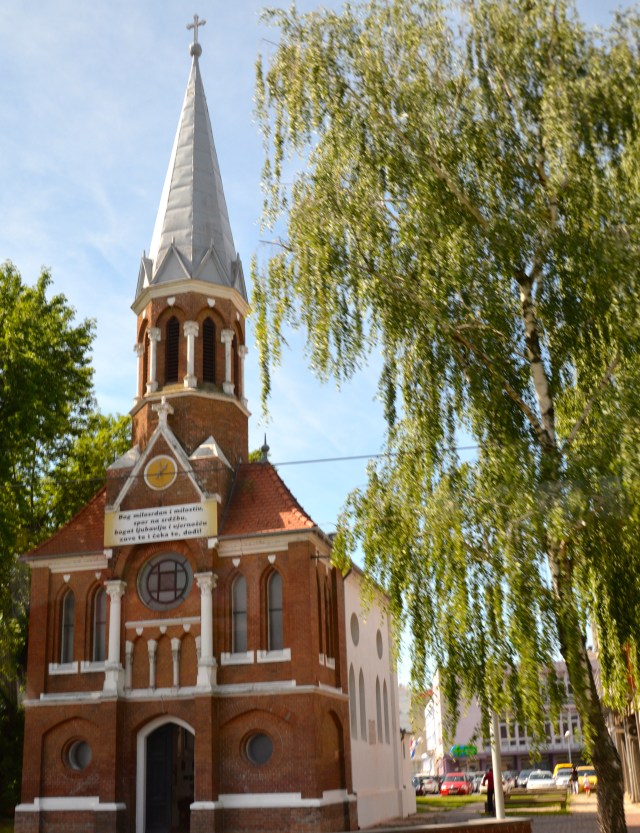
Photo ©Jean Janssen Osijek, Croatia.

Photo ©Jean Janssen. Osijek, Croatia
The Old Town is part of the Tvrda, or citadel. The Hapsburgs built the fort on the bank of the River Drava when they drove out the Ottomans. “It is the best-preserved and largest ensemble of Baroque buildings in Croatia.”

Photo ©Jean Janssen. In the foreground is the Former Guard House, now the Archeological Museum. In the background is St. Michael’s church, built by the Jesuits on the site of an old mosque.

Photo ©Jean Janssen. Within the fort, Tvrda at Osijek, Croatia.
Once in the fort we went to one of the smaller churches for an organ concert. The music was lovely and it gave me the chance to sit and admire the church furnishings. After that it was a comfort stop and local wine and snacks in the church courtyard. Boris hit the gift shop.

Photo ©Jean Janssen. Choir Loft with our organ from the concert.
We didn’t get any free time just to wander around the Tvrda. I would have preferred that to the food and wine break. I did stop to take pictures as we wandered through to the square where the German/Austrian influence of the Hapsburgs is definitely seen.
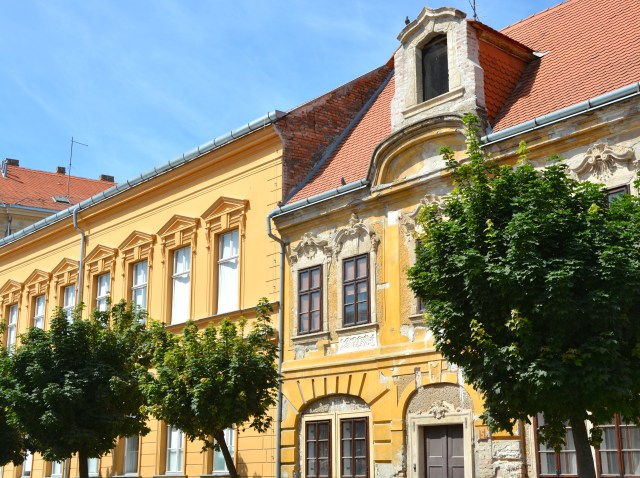
Photo ©Jean Janssen. Tvrda, Osijeck, Croatia.

Photo ©Jean Janssen. Tvrda, Osijek, Croatia
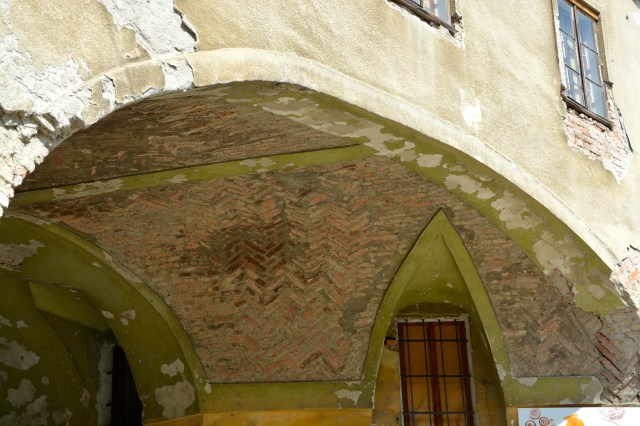
Photo ©Jean Janssen. Tvrda, Osijek, Croatia

Photo ©Jean Janssen. The square in Tvrda complete with outdoor dining. Beyond the fountain is a Plague Statute.
We had a better view of the outer walls of the fort as we left Osijek and crossed the Drava River into another province of Croatia. I thought the guide in the church was little to heavy on the gift request, but the next stop was worse. While the owner was entertaining, the sole purpose was to purchase souvenirs. That stop was not on our cruise itinerary.
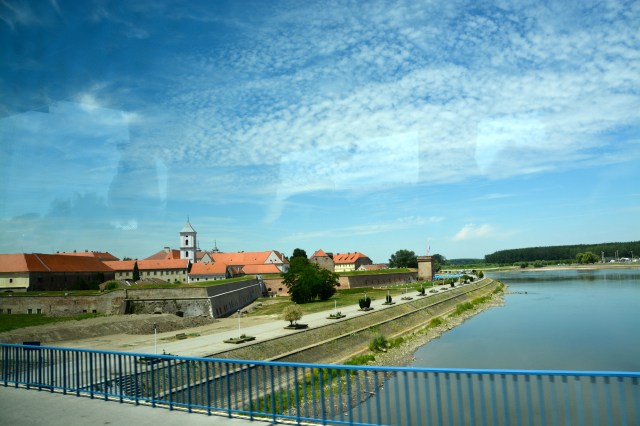
Photo ©Jean Janssen. View of the fort as we left Tvrda and Osijek.

Photo ©Jean Janssen. Fortifications on the other side of the River Drava, Croatia.
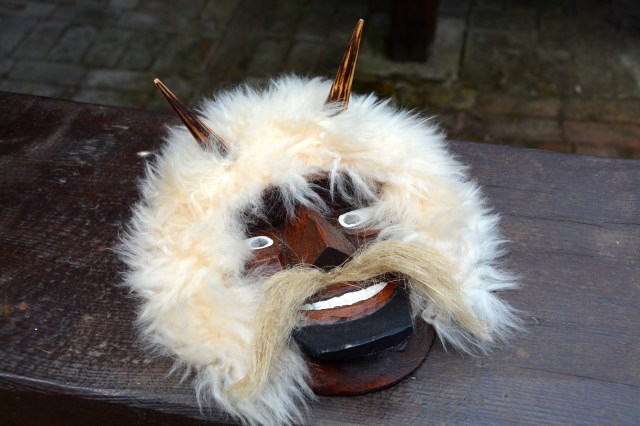
Photo ©Jean Janssen. Folk art and one of Boris’ purchases in Croatia.
I enjoyed our drive through the countryside to our unique final stop. We will be welcomed into the home of a local family and share a traditional lunch. The tour group is divided into smaller groups of 8-10. Our host family knew very little English so our tour guide went along to translate.

Photo ©Jean Janssen. Steeple and a stork nest.

Photo ©Jean Janssen In the Croatian countryside.

Photo ©Jean Janssen. This newly-consructed straw house is someone’s weekend home. Croatia.
Stefen and his wife Olga welcomed us to their home. The dining room was right by the door to the garden; it also had a small kitchen and seating area in it. However, this was not the kitchen where the food had been prepared. It was brought from another area of the house. Most of these home owners also operate a bed and breakfast and it is possible that the room were were in is part of their rental unit.
We enjoyed asking questions of our hosts. Stefen is from Croatia; Olga is originally from Bosnia. They did not share a religion when they married. Stefen said the family takes on the religion of the husband as the head of the household. I write that “Stefen said” but actually it was the translator that shared his thoughts and answers to our questions.
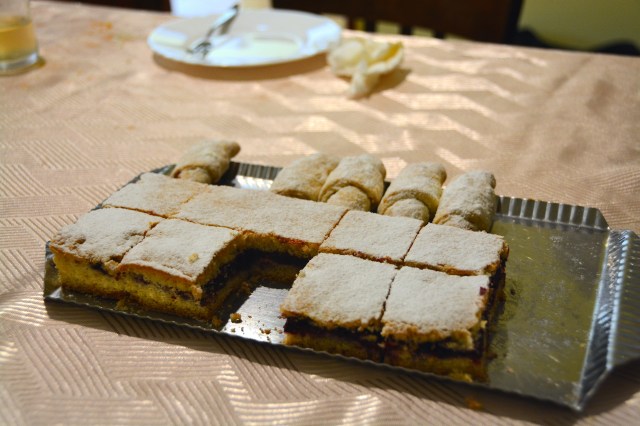
Photo ©Jean Janssen. Olga had made a variety of homemade desserts.
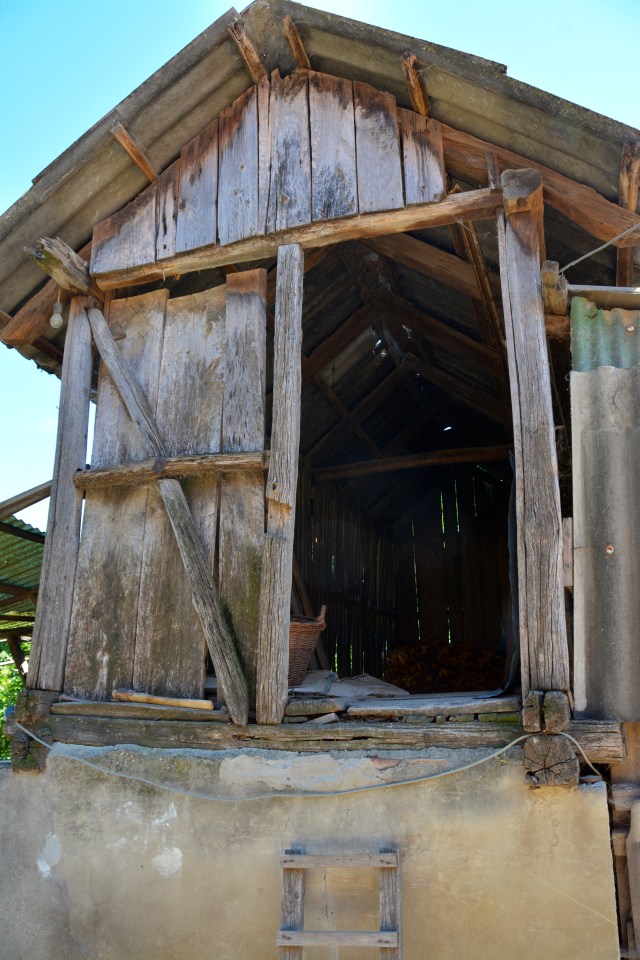
Photo ©Jean Janssen. On the farm.
We started with a tomato soup with meat. Boris ate two whole bowls. It was all homemade, simple, hardy, and tasty. Next was bread, then fried chicken, and four sides dishes and salads. It was not about presentation; we ate family style. They also served bottled water, a homemade cherry juice (very sweet and very good), and wine. Stefen asked if we wanted to try his homemade wine. We said yes, and I asked if he would join us. Up until then, the couple just served us. Stefen seemed very pleased to be asked to sit with us. After serving dessert, Olga joined us too.

Photo ©Jean Janssen. The hosts’ farm is self-sustaining.

Photo ©Jean Janssen. Stefen and Boris bond over farming. No common language required.
Since they had told us about their life, Stefen asked about us. Everyone was hesitant, so I told them about Boris and I. Then Boris shared pictures of the crops he grows. Stefen loved it. After everyone had shared their story, Stefen took us out to see their farm and he and Boris headed out into the fields. All too soon the visit was over. Certainly the highlight of our day. The personal interaction was wonderful. It was a genuine experience. We were treated like family and didn’t feel touristic at all.

Photo ©Jean Janssen. Carl enjoyed our hosts’ garden.
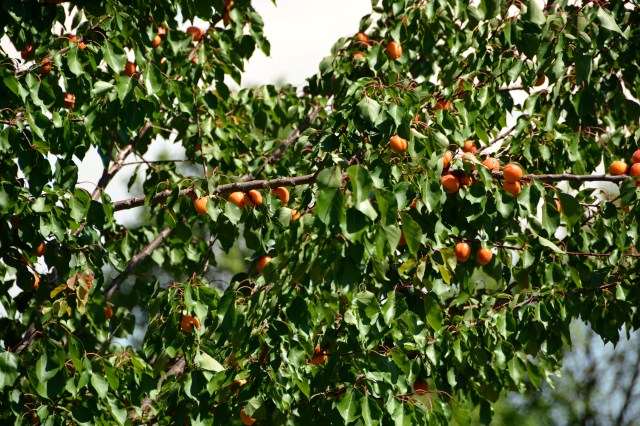
Photo ©Jean Janssen. Our hosts’ fruit trees.

Photo ©Jean Janssen. Our Croatian hosts in their garden.
After this special afternoon we went back to the boat. As we had earlier in the day, we passed typical Croatian houses. A narrow side faced the street. The lots were narrow and deep. A long porch ran the length of the house.
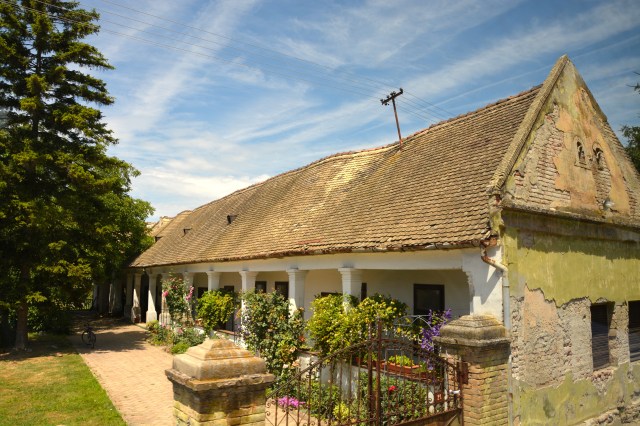
Photo ©Jean Janssen. A typical Croatian-style home.
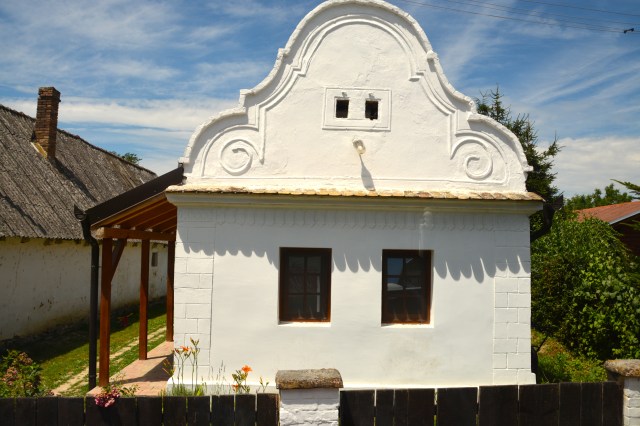
Photo ©Jean Janssen. Street view of a Croatian-style home.
Seaside Croatian cities and towns enjoy revenue from tourists. They would certainly like to encourage tourism in this area of the country as well. Of course, it is a completely different experience. (Boris and I have visited sea coast cities in Croatia several times.) There are language barriers, but for an authentic experience I encourage your visit.

Photo ©Jean Janssen. Eastern Croatian countryside.

Photo ©Jean Janssen. Osijek, Croatia.
Tomorrow is the last country on our tour and our final destination, Budapest, Hungary.
